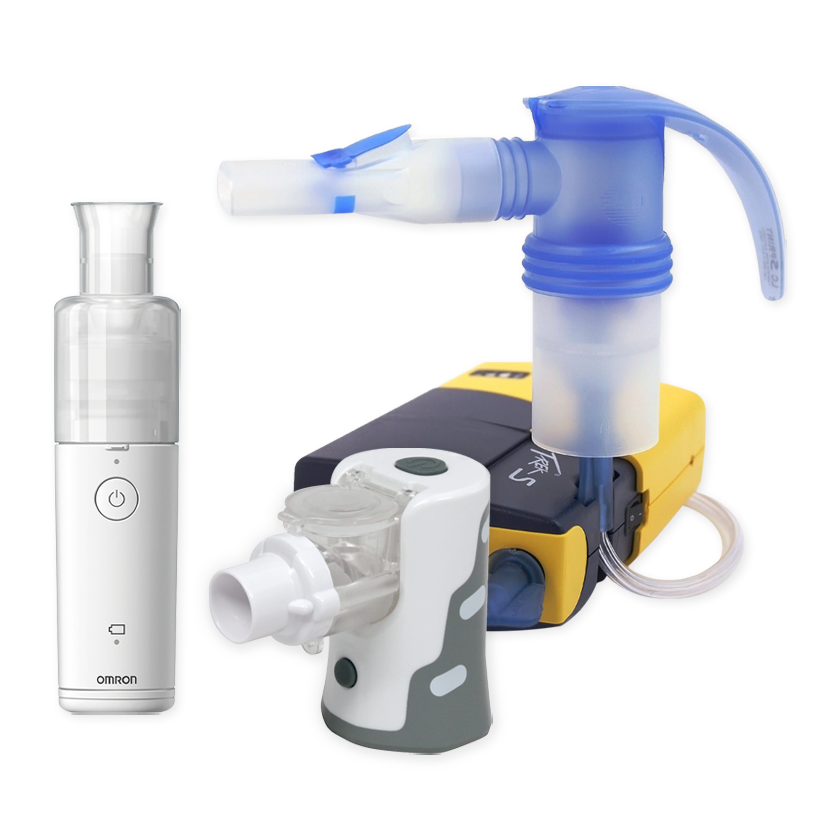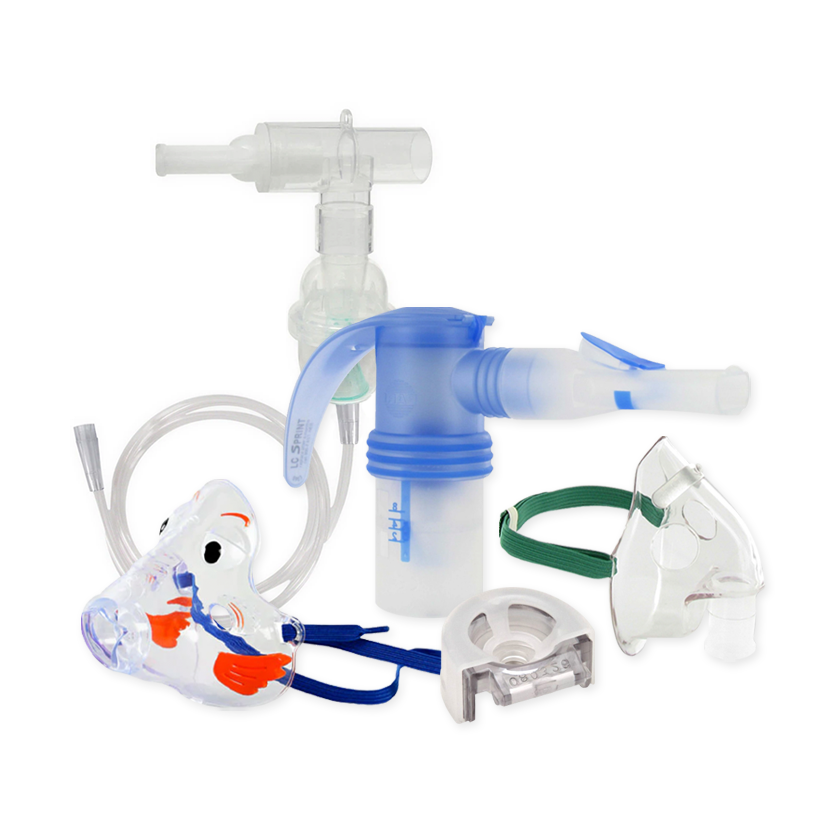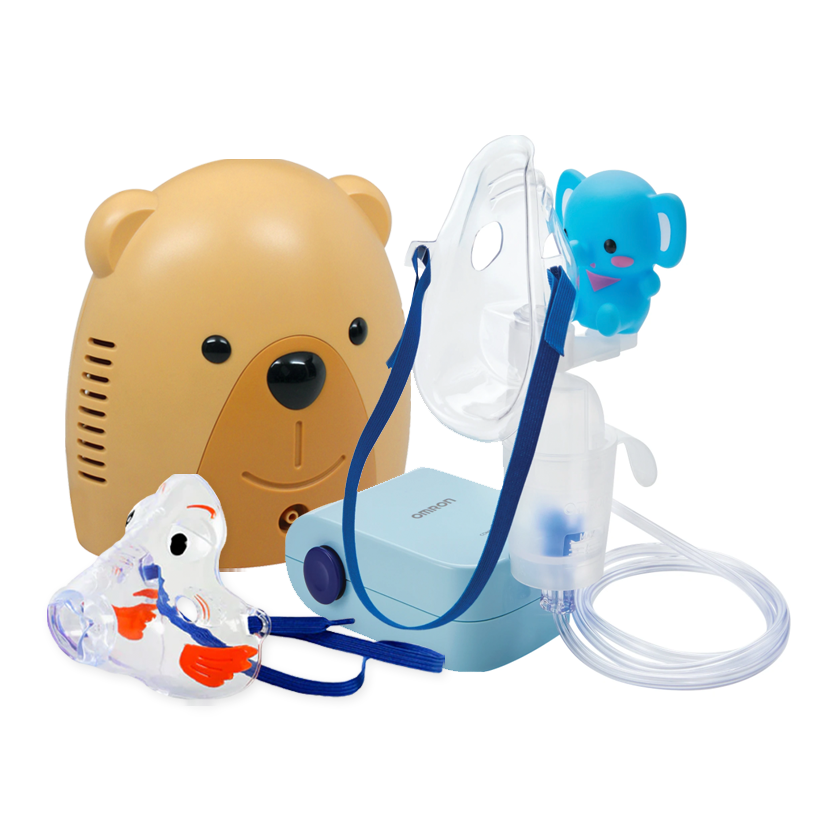Your Cart is Empty
Tips & Advice Center: Asthma

Shopping for Products that Help with Asthma >>
Reducing Asthma Triggers >>
Your Child's Asthma Treatments: Tips for Beginners >>
Air Purifiers and Your Health >>
Using Inhaler Spacers to Make Treatments Effective >>
Best Nebulizer for Asthma >>
Choosing a Nebulizer for Asthma >>

Shopping for Products that Help with Asthma
Treatment for asthma and other respiratory conditions involves more than seeking medical advice and formulating a treatment plan–it also requires you to make lifestyle choices to improve your health.
If you're ready to make changes to your living environment, there are many products that can help. Peak flow meters, steam inhalers, air purifiers, humidifiers, inhaler spacers, dietary supplements, and natural cleaning supplies can all promote a healthier lifestyle.
Before you purchase one of these supplemental products, consider the following shopping tips:
- Find customer reviews for products you're interested in.
- Contact the Association of Home Appliance Manufacturers to read about tests and ratings for certain products.
- Find out if products have Asthma-Friendly Certification from the Asthma & Allergy Friendly Certification Program. Look for certification on products like vacuums, air cleaners, washing machines, mattresses, toys, flooring, and paint.
- Look for retailers that specialize in respiratory aid supplies.
- Everybody has unique allergy triggers such as insects, dust mites, pet dander, mold, tobacco smoke, and pollen. Choose products that will help reduce your triggers, such as allergy relief bedding that protects against dust and other allergens that can be transmitted from mattresses and pillows.

Reducing Asthma Triggers
If your child has asthma, a treatment plan from your healthcare provider is important for reducing symptoms and improving health. Follow your doctor's treatment plan and use inhalers, nebulizers, and medications according to prescription orders. Find out about your child's asthma triggers and make time to reduce them to keep symptoms at bay. Here are some tips on reducing allergen and asthma triggers:
- Ask your doctor about tests to determine asthma/allergy triggers for your child. Common triggers include tobacco smoke, industrial emissions, animal dander, insect feces, dust mites, and tree and plant pollen.
- Avoid heavy exercise or playing outdoors on days when pollen and pollution counts are high.
- Do not smoke inside the home, car, or around your child.
- Change air filters regularly and make sure all home appliances are in working order.
- Run the air conditioner on humid days.
- Use clean kitchen and bathroom fans during showers, blow-drying, and cooking.
- Change humidifier water daily to prevent the growth of microbes.
- Wash linens and clothing regularly to reduce dust mites, animal dander, and pollen.
- Use hypo-allergenic bedding and wash it in hot water (130 degrees F).
- Avoid purchasing furniture that collects dust and dirt.
- Choose solid-surface flooring over carpet.
- Treat your home for insect and pest infestations.
- Avoid bringing pets home if your child is allergic. If you have pets, keep their cages and areas clean.
- Use cleaners, chemicals, polishes, and substances that will not trigger your child's asthma. Consider using non-toxic cleaners and solutions to maintain your home.

Your Child's Asthma Treatments: Tips for Beginners
Asthma treatment for your child starts with a visit to your healthcare provider, who will help you establish a treatment program. Your child may be prescribed a nebulizer. Nebulizers change medicine into a liquid mist that can be inhaled directly into the airways. Nebulizers are thought to be more effective than inhalers in treating asthma in children. If asthma treatment is new for you, consider this information about possible treatments:
- There are different types of nebulizers. Look for models made especially for children, such as the Margo Moo nebulizer and the Penguin nebulizer. These units come with a variety of pacifier, mask, and mouthpiece attachments that will ensure proper use as your child grows.
- Portable nebulizers can be used for travel or daily treatments when you're away from home. Some can be used with fun attachments, such as the Bubbles the Fish face mask.
- Metered dose inhalers (MDI) are commonly prescribed for asthma. They work by pushing out a spray of medicine that is inhaled through the airways. Inhaler spacers are sometimes used to keep the medicine in a holding chamber, allowing children to inhale medicine more slowly. If your child uses an inhaler without a spacer, it's likely that the medication will only reach the back of the throat.
- Dry powder inhalers deliver prescription medicine in powder form. It requires a bit more effort to pull the medication through the airways.
- Some medications are made only for use with certain types of nebulizers. For example, Pulmicort Respules should only be used with compressor nebulizers. The effectiveness of any drug depends on regular, prescribed use. Failure to follow your healthcare provider's orders may result in unsuccessful treatment.

Air Purifiers and Your Health
Air purifiers help remove contaminants such as mold, pollen, and allergens from the air. They're often recommended for individuals with breathing conditions or allergies to help manage symptoms. If you're considering buying an air purifier to improve air quality (and your health), keep the following tips in mind:
- HEPA is an acronym that you'll see a lot as you browse purifiers. HEPA stands for "high-efficiency particulate air." These filters use fiberglass particles to trap contaminants.
- In order to ensure maximum effectiveness, air filters will need to be changed regularly (usually every few months). Keep extras on-hand for convenience. Some models, like the Electrostatic Air Purifier, have indicators that will let you know when it's time for a filter replacement.
- Most air purifiers are designed for use in one room. If you suffer from asthma, COPD, chronic bronchitis, or another respiratory condition, you might consider purchasing more than one air purifier to ensure that your living space is free of pollutants.

Using Inhaler Spacers to Make Treatments Effective
Inhaler spacers, or aerosol holding chambers, can be added to metered dose inhalers (MDIs or asthma inhalers). With an inhaler spacer, inhaled medicine goes into a holding chamber before reaching the lungs. This helps ensure that medication is delivered directly to the airways, rather than getting caught in the throat. Because using inhalers can be challenging for children, spacers are great for making sure that they get the medication they need.
Before using an inhaler spacer, keep the following information in mind:
- They should always be used to deliver corticosteroids.
- Spacers should not be used with a dry powder inhaler.
- Spacers should be cleaned daily with warm water and mild soap. Let the spacer and parts air-dry overnight.
- Some spacers are available with special masks to make them easier to use for children or adults who have trouble tightly sealing their lips around a mouthpiece.
- To prevent the spread of germs, do not share your inhaler spacer.
- A spacer that looks damaged or cracked should be discarded.
- If your spacer whistles upon use, try breathing more slowly.
- Always consult your healthcare provider before using a new breathing aid.

Best Nebulizer for Asthma
With so many different types and brands out there, how do you know which is the best nebulizer for asthma? The answer is simply – there isn’t one. You have to buy the best asthma nebulizer for your needs.
A nebulizer treatment is used to open up the airways in the lungs of an asthmatic. When you aren’t breathing well, you want this to happen in the quickest and simplest way. The jet nebulizers are the most popular because they can deliver any type of medication, quickly and easily into your lungs. The ease of use and lack of medication restrictions make jet nebulizers the most popular type. Jet nebulizers are also the original nebulizer type; so many long term users often feel most comfortable using a machine like the one they are used to.
Some people are looking for a silent nebulizer and for those people, an ultrasonic nebulizer is the best choice. These nebulizers work best with thin, light medications because they use ultrasonic vibrations to aerosolize the medications. Thick medications, such as Pulmicort, can slow them down. Ultrasonic nebulizers do have a few medication restrictions so make sure to check with your pharmacist or healthcare provider before choosing an ultrasonic nebulizer.
Travel nebulizers are also very popular because they are small and extremely convenient. These are a good choice for a child’s nebulizer or for people who often are not home for their treatment. Many travel nebulizers have alternative power sources like a car adapter to make treatments “on-the-go” easy.
When you are looking for the best nebulizer for asthma, first discuss the options with your healthcare provider. There may be restrictions on the unit due to the medicine prescribed (ultrasonic machines aren’t compatible with all medication). Then you can consider the space you have available, the cost of the unit and where you will be using your nebulizer before you make your purchase.

Choosing a Nebulizer for Asthma
When your child needs a nebulizer for asthma or allergies, trying to narrow down the options can be overwhelming. There are many different types and brands of nebulizers available in the market today, and the best choice for you will depend on several factors. Parameters such as your budget, portability needs and medical needs will dictate which choice is best for you.
Tabletop systems are:
- Well suited for those who will always perform treatments at home
- Most economical
- More durable
- Very reliable
Handheld, portable nebulizers provide:
- More treatment options
- Smaller, more compact size
- Power options like car adapters and/or batteries for emergencies/travel
- Options for compressor, ultrasonic or vibrating mesh models
The cost of an asthma nebulizer varies based on the brand, features, warranty, and durability. Many people find having two nebulizers, one tabletop for home and one portable for travel, provides the options for treatments no matter the location or situation. While there are many brands available, DeVilbiss, Respironics, and Pari systems typically receive the highest customer reviews.





